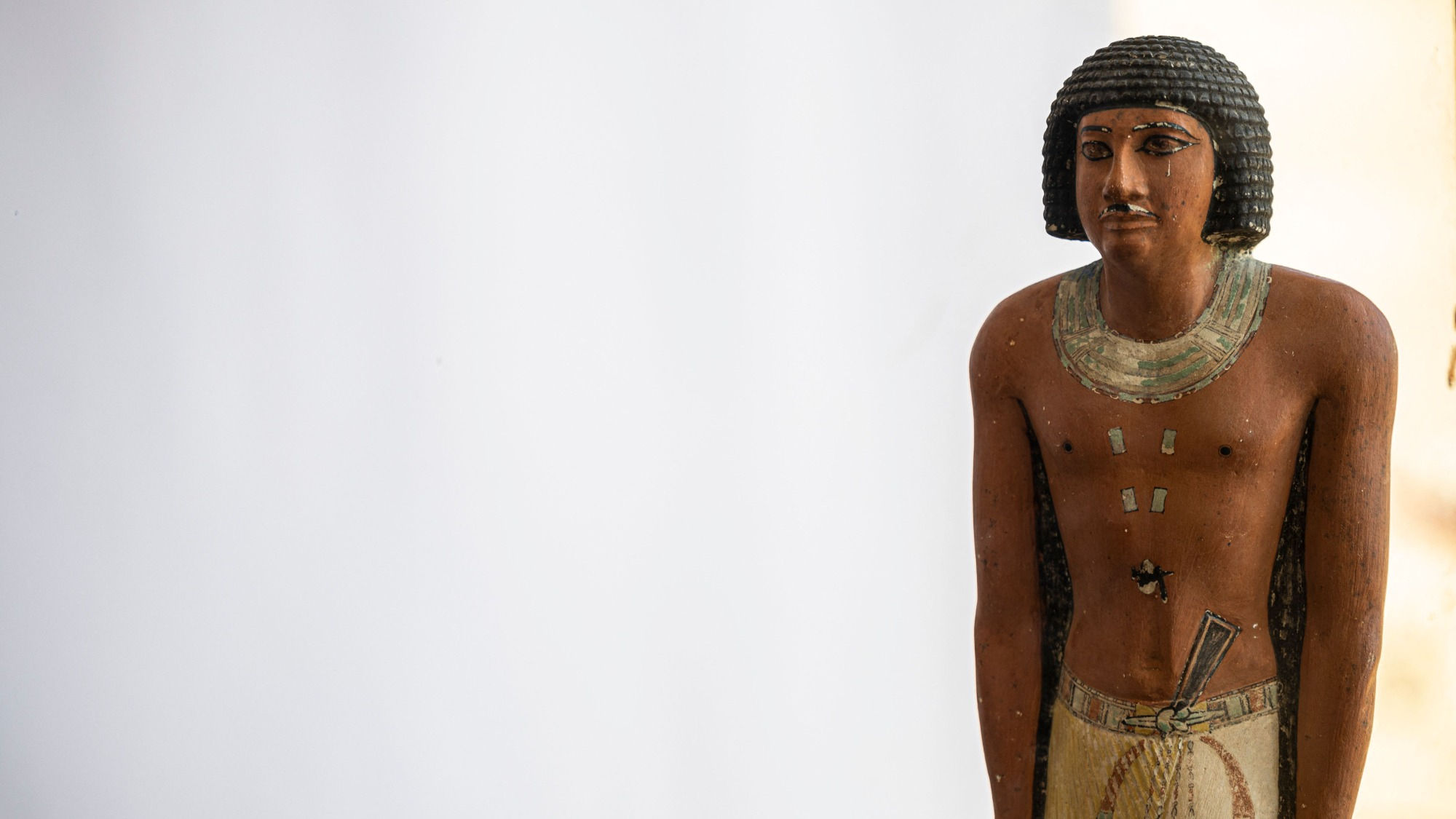

Egyptologists announced that they have uncovered multiple 4,300 year old tombs and a gold laced mummy in the Saqqara necropolis, about 19 miles south of the capital city of Cairo.
The tombs date back to 2686-2181 BCE, during the the Fifth and Sixth dynasties of the Old Kingdom, according to officials at a press conference on January 26. The vast burial site is located at the ancient Egyptian capital city of Memphis and is a UNESCO World Heritage site. It’s home to multiple pyramids, animal graves, and old Coptic Christian monasteries.
[Related: Egypt is reclaiming its mummies and its past.]
Egypt’s somewhat controversial former antiquities minister Zahi Hawass led the team and said 12 “beautifully carved” statues were found, in addition to two deep burial shafts.
“The most important tomb belongs to Khnumdjedef, an inspector of the officials, a supervisor of the nobles, and a priest in the pyramid complex of Unas, the last king of the fifth dynasty. The tomb is decorated with scenes of daily life,” Hawass told reporters.
One of the other tombs belonged to a person named Meri. According to Hawass, Meri was the pharaoh’s appointed “secret keeper.” This title was held by a senior palace official who had the authority and power to perform certain religious rituals.
Another tomb belonged to a priest in Pharaoh Pepi I’s pyramid complex, and one other tomb belonged to a judge and writer named Fetek (according to inscriptions on the coffin). Fetek’s tomb included a collection of “the largest statues” ever found in the area, according to the team.
A large, completely sealed rectangular limestone sarcophagus holding a mummy covered in gold leaf inside was also uncovered. The mummy is of a man named Hekashepes and “may be the oldest and most complete mummy found in Egypt to date,” Hawass added.
[Related: This teen mummy was buried with dozens of gold amulets.]
In 2018, an expedition in Saqqara found a 4,400-year-old tomb of a royal priest named Wahtye, and a following visit in 2019 led to the discovery of hundreds of mummified animals.
Since tourism accounts for up to 15 percent of Egypt’s gross domestic product (GDP) and about two million jobs, leaders hope that a recent string of discoveries will help entice visitors. Political unrest, economic crises, and the COVID-19 pandemic have hurt the vital industry in recent years.
However, some critics, like the former head of Supreme Council of Antiquities, say that excavations like these have prioritized finds that grab attention over hard academic research. Regardless of the debate, the government still plans to hold the long-delayed inauguration of the Grand Egyptian Museum located at the foot of the famed pyramids in Giza this year. It hopes to draw in 30 million tourists per year by 2028.
